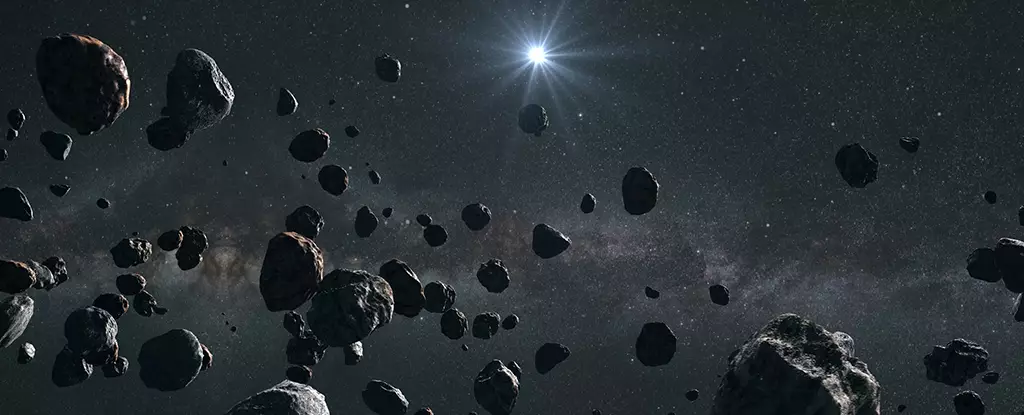In a groundbreaking discovery, a new scanning technique has revealed compelling evidence that challenges our understanding of the boundaries of our Solar System. For decades, astronomers believed that the Kuiper Belt, a field of icy boulders, dissipated at a distance of 48 times the Earth-Sun distance. However, recent findings indicate that our Solar System’s disc of material extends much further into interstellar space. This revelation opens up new possibilities and suggests that our Solar System may not be as diminutive as previously thought.
Exploring New Frontiers with the New Horizons Probe
To gain a deeper understanding of the outer reaches of our Solar System, a team of astronomers led by Canada’s Herzberg Astronomy and Astrophysics Research Centre embarked on a mission to identify new targets for the New Horizons Probe. After capturing breathtaking images of Pluto, the probe set its sights on a peculiar snowman-shaped rock located approximately 40 AU from the Sun. As the New Horizons Probe traversed further from the Sun at an impressive speed of around 60,000 kilometers per hour, identifying noteworthy objects became increasingly challenging.
The Art of Shift-Stacking and the Need for Innovation
While attempting to spot celestial objects in the darkness of interstellar space, astronomers employ various techniques. One common method is known as shift-stacking. Due to the limited amount of light present at the outer edges of the Solar System, individual telescope images may reveal minimal objects. By stacking multiple images taken at different times, astronomers can enhance the visibility of dimly lit objects. However, this technique requires meticulous trial and error, with astronomers adjusting image stacks along potential orbits until an object becomes distinguishable. Such an arduous process demands significant human effort and time.
To streamline the search for previously undetected objects, researchers employed machine learning, training a neural network to analyze telescope imagery. The neural network was exposed to simulated objects inserted into the images to enhance its detection capabilities. Utilizing data collected by the Subaru Telescope on Mauna Kea in Hawaii throughout 2020 and 2021, the machine learning technique proved to be a significant advancement. Comparing the results obtained by the neural network with a human search through the 2020 data, it was discovered that the machine learning technique identified twice as many Kuiper Belt Objects. This finding suggests a higher density of material between 60 and 80 AU along the trajectory of the New Horizons Probe.
Implications and Unanswered Questions
The results of this study could potentially explain an anomalous glow observed by both the New Horizons Probe and the Hubble Space Telescope. The additional debris discovered suggests that it contributes to the reflective dust present in the outer regions of the Solar System. However, it is unclear whether similar surveys of other areas of the sky were simply unlucky in their findings, if there are unique characteristics along the New Horizons Probe’s path, or if there are limitations to the machine learning technique employed. While the study’s results have yet to undergo peer review and confirmation through future surveys, they propose the intriguing possibility of our Solar System containing two rings of icy material, separated by a gap at approximately 50 AU.
Unraveling the Mystery of the Gap
The existence of such a gap in our Solar System raises compelling questions about its origin and purpose. Scientists are intrigued by the enigmatic nature of this phenomenon. Why does a distinct division exist within the disc of icy material surrounding our Solar System, resembling two separate rings? This discovery invites further exploration and study to unravel the mysteries of our cosmic neighborhood.
The findings presented at the 54th Lunar and Planetary Science Conference in 2023 challenge our preconceived notions of the Solar System’s boundaries. If verified, this research will greatly expand our understanding of the vastness of our cosmic environment. The implications of these discoveries reach far beyond our immediate surroundings and offer insights into the formation and dynamics of other planetary systems in the universe. As scientists continue to explore and innovate, our grasp of the cosmos will undoubtedly evolve, revealing a universe of infinite wonders waiting to be uncovered.


Leave a Reply